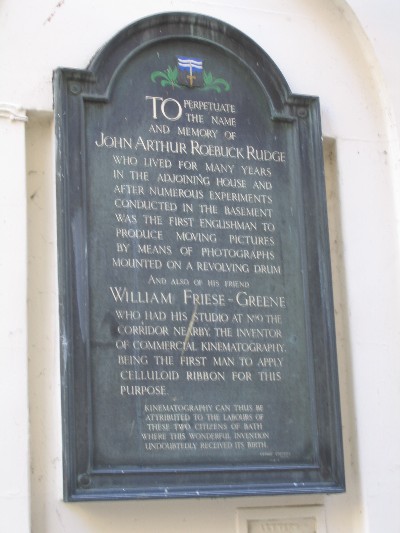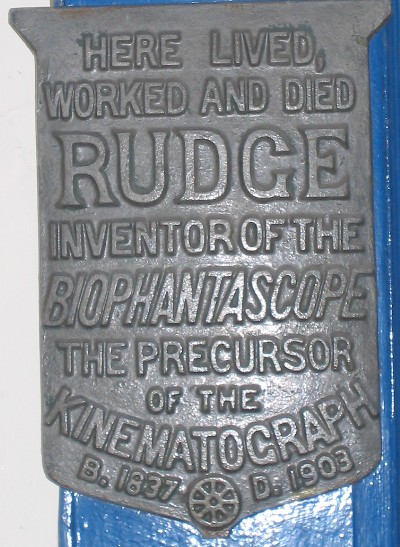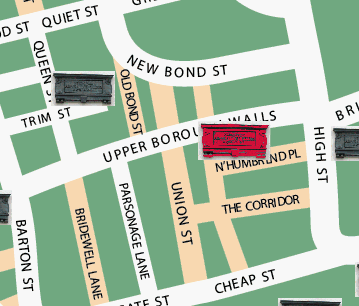John Arthur Roebuck Rudge
Who was he?
Wikipedia:
John Arthur Roebuck Rudge was a scientific instrument maker by
profession, later specialising in the creation of magic lanterns.
He
developed the
Biophantic
Lantern,
which
was
unique
in that it could display seven slides in rapid
succession so producing an effective illusion of movement.
Why was he in Bath?
John Arthur Roebuck Rudge was born in Bath, the son of a
wood-turner
and antique dealer. As well as making scientific instruments, he
was an
entertainer who put on countless shows, earning the nickname
'Wizard of
the Magic Lantern'.
Rudge met
William Friese-Greene
about
1880, the latter having a photographic shop nearby in Bath, and
they
formed a close association. Rudge did most of the technical work
whilst
Friese-Greene helped with the photography and put on some public
demonstrations.
Friese-Greene was fascinated by the
Biophantic
Lantern and in 1886 he began work
with Rudge on enhancing it in order to project photographic
plates.
They called the device a
Biophantascope.
Friese-Greene
realised
that
glass
plates would never be a practical medium for true moving pictures
and in 1885 he began to experiment with oiled paper and by 1887
was
experimenting with celluloid as a medium for motion picture
cameras.
[victorian-cinema.net]
Location of plaque at New Bond Street Place:


The text reads
"To perpetuate the name and memory of John Arthur Roebuck Rudge
who lived
for many years in the adjoining house and after numerous
experiments
conducted in the basement was the first Englishman to produce
moving
pictures by means of photographs mounted on a revolving drum.
And also of his friend
William Friese-Greene
who
had his studio at No. 9 The Corridor nearby, the inventor of
commercial
kinematography being the first man to apply celluloid ribbon for
this
purpose.
Kinematography can thus be attributed to the labours of these
two
citizens of Bath where this wonderful invention undoubtedly
received
its birth."
Nearby is a second plaque:

The text reads
Here lived, worked and died
Rudge
inventor of the Biophantascope the precursor of the Kinematograph
b.
1837 d. 1903"
Location map of New Bond Street Place:

(c) 2018
Bath-Heritage.co.uk | Contact us|





